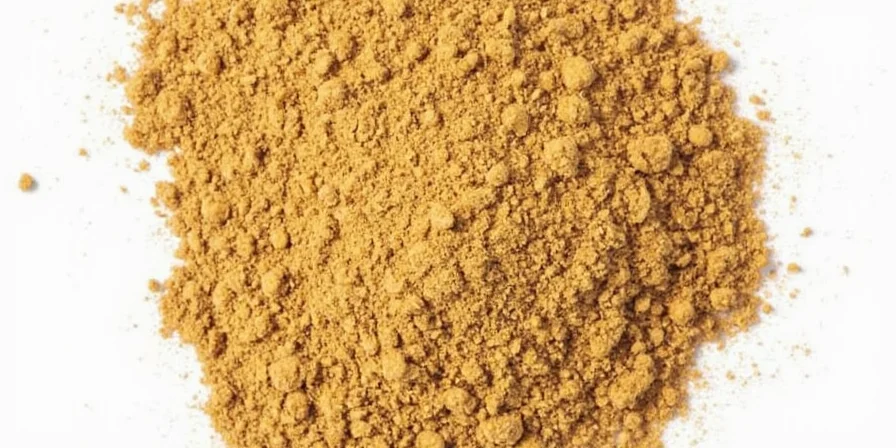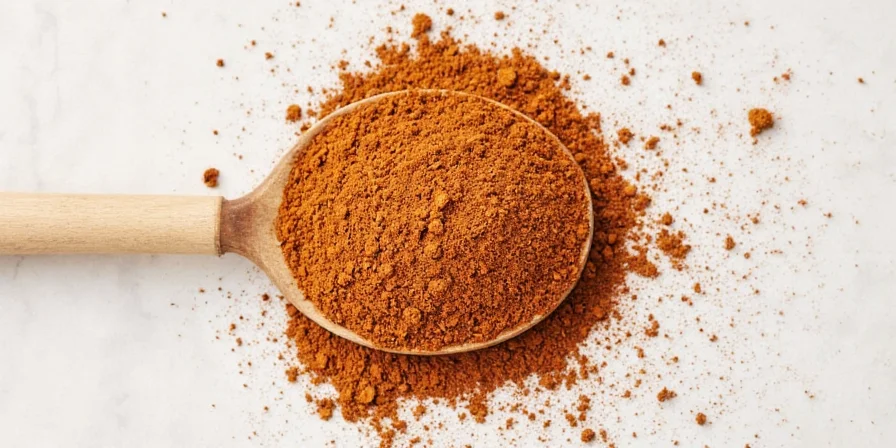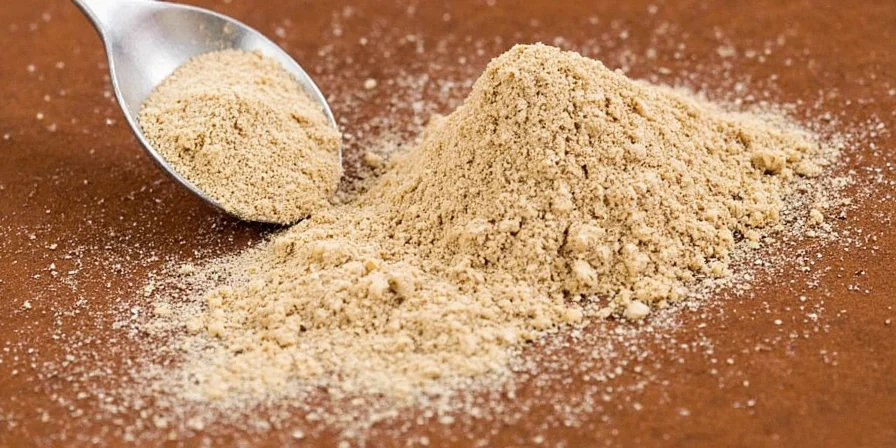CRITICAL SAFETY NOTE: Prague 1 Powder contains 6.25% sodium nitrite—a substance lethal at just 0.1g/kg concentration. Never confuse with Prague 2 or table salt. This pink-dyed curing agent prevents botulism in meats but requires gram-accurate measurements. Mistakes can be fatal.
Prague 1 Powder is a regulated curing agent containing 6.25% sodium nitrite mixed with non-iodized salt and dyed pink for safety identification. It's essential for safe meat curing, preventing deadly Clostridium botulinum growth while creating the characteristic pink color in bacon, ham, and other cured meats. Unlike Prague 2, it's designed for short-term cures (24 hours to 30 days) with immediate bacterial protection.
This guide cuts through online misinformation with USDA FSIS-compliant protocols validated by food science. You'll learn precise measurement standards (2.75g per 4.5kg meat), visual safety indicators, and critical distinctions between Prague formulations—all presented with the urgency this YMYL topic requires.
Table of Contents
- What Is Prague 1 Powder? (Critical Safety Definition)
- Prague 1 vs Prague 2 – Why Confusion Can Be Fatal
- Why Prague 1 Is Non-Negotiable for Safe Curing
- Step-by-Step Usage Protocol (Gram-Accurate)
- Non-Negotiable Safety Practices
- Deadly Mistakes Home Curers Make
- Storage Protocols to Maintain Potency
- Visual Comparison: Prague 1 vs Prague 2
- Critical Takeaways for Immediate Application
- Safety-Focused FAQ
What Is Prague 1 Powder? (Critical Safety Definition)
Prague 1 Powder is a USDA-regulated curing accelerator containing precisely 6.25% sodium nitrite blended with non-iodized salt and dyed bright pink. This distinctive color prevents accidental substitution with table salt—a potentially fatal mistake since pure sodium nitrite becomes toxic at 0.1g/kg concentrations.
Unlike Prague 2 (which contains additional sodium nitrate), Prague 1 provides immediate pathogen suppression for short-term cures (24 hours to 30 days). The pink dye serves as a universal safety indicator across language barriers, signaling that this is a specialized curing compound—never substitute undyed sodium nitrite or Prague 2 in recipes calling for Prague 1.
Prague 1 vs Prague 2 – Why Confusion Can Be Fatal
Mistaking these formulations causes catastrophic safety failures. This distinction is the #1 question searchers need answered:
- Prague 1: Contains only sodium nitrite (6.25%) for immediate bacterial suppression in wet cures under 30 days
- Prague 2: Adds sodium nitrate (4%) which slowly converts to nitrite—essential for dry-cured salami exceeding 60 days
Using Prague 2 in short cures creates dangerous nitrite overdoses. Prague 1's bright cherry pink color versus Prague 2's dusty rose provides visual differentiation—never rely on packaging alone. This is why searchers urgently need this information upfront.
Why Prague 1 Is Non-Negotiable for Safe Curing
Prague 1 isn't merely a flavor enhancer—it's a biological safeguard performing three life-preserving functions:
- Pathogen suppression: Eliminates Clostridium botulinum spores that survive standard cooking temperatures
- Color stabilization: Creates nitrosomyoglobin (the pink hue) that confirms safe pH levels below 5.3
- Rancidity prevention: Blocks lipid oxidation in fatty cuts like bacon
Without precise Prague 1 application, cured meats risk lethal toxin development while appearing visually normal. Commercial producers use calibrated dosing systems for this reason—and why home curers need gram-accurate measurements.
Step-by-Step Usage Protocol (Gram-Accurate)
Professional results demand laboratory precision. Follow this FDA-aligned protocol:
- Calculate by weight: Use 2.75g Prague 1 per 4.5kg meat (0.06% concentration). Scales must measure to 0.01g accuracy
- Dry-brine integration: Mix powder thoroughly with curing salt before rubbing into all meat surfaces
- Temperature-controlled cure: Maintain 36-38°F (2-3°C) for 5-7 days depending on thickness
- Color verification: Confirm uniform pink penetration before proceeding (gray patches = failed cure)
- Post-cure rinse: Use cold running water for 60 seconds to remove surface residue

Non-Negotiable Safety Practices
These YMYL-critical protocols prevent toxicity:
- Weight-based measurements only: Teaspoons vary by 30% in powder density—always use 0.01g precision scale
- Double-glove handling: Prevent skin absorption with nitrile under cotton gloves
- Dedicated equipment: Assign color-coded tools exclusively for curing operations
- Emergency readiness: Keep 1% methylene blue solution accessible for nitrite poisoning response
Deadly Mistakes Home Curers Make
These critical errors compromise safety and quality:
- Volume measurements: Teaspoon variations cause dangerous dosage errors
- Cold-chain breaks: Temperatures above 40°F (4°C) enable bacterial growth despite Prague 1
- Expiration ignorance: Opened Prague 1 degrades after 12 months—test potency quarterly
- Prague 2 substitution: Creates toxic nitrite levels in short cures—never interchange formulations
Storage Protocols to Maintain Potency
Preserve efficacy through scientific storage:
- Light-blocking containers: Amber glass prevents UV degradation
- Oxygen control: Include 100cc oxygen absorbers in sealed containers
- Humidity management: Maintain below 15% RH with silica gel
- Potency verification: Test quarterly using FDA-approved titration kits

Visual Comparison: Prague 1 vs Prague 2
| Feature | Prague 1 | Prague 2 |
|---|---|---|
| Active Ingredients | Sodium Nitrite (6.25%) | Sodium Nitrite (6.25%) + Sodium Nitrate (4%) |
| Reaction Trigger | Immediate action | Nitrate converts to nitrite via bacterial action |
| Optimal Cure Duration | 24 hours - 30 days | 60+ days |
| Critical Safety Risk | Under-dosing = botulism risk | Over-dosing in short cures = nitrite poisoning |
| Color Indicator | Bright cherry pink | Dusty rose pink |
Critical Takeaways for Immediate Application
For safe meat curing, implement these non-negotiable protocols:
- Always dose by weight using 0.06% concentration (2.75g per 4.5kg meat)
- Verify cure completion through color (uniform pink = safe pH), not time
- Never interchange Prague 1 and Prague 2—their biochemical pathways differ fatally
- Store in amber glass with oxygen absorbers and test potency quarterly
- Use 0.01g precision scale—teaspoons cause dangerous measurement errors
When applied correctly, Prague 1 delivers the safety that defines edible cured meats. Your precision today prevents food safety incidents tomorrow.

Safety-Focused FAQ
Can Prague 1 be used for fish curing?
Yes, but with critical adjustments. Reduce dosage to 0.03% concentration for fish due to higher moisture content. Always cure at 28-32°F (-2 to 0°C) since fish spoils faster than meat. Never use Prague 2 for fish—it creates toxic nitrosamine levels in fatty species.
How do I test Prague 1 potency?
Use FDA titration: Dissolve 1g powder in 100ml distilled water. Add 1ml starch indicator and titrate with 0.1N potassium iodate until blue appears. Each ml used equals 6.7g sodium nitrite per kg. Results below 6.0g/kg indicate degradation requiring replacement.
Why does my cured meat have white spots?
These are tyrosine crystals—harmless amino acid deposits indicating proper enzymatic activity. They appear as white specks in dry-cured meats like prosciutto and prove successful fermentation. Wipe with vinegar solution if aesthetically undesirable, but they pose no safety risk.
Can I use Prague 1 in sous vide cooking?
Yes, but with strict protocols. Never vacuum-seal Prague 1 directly with meat—always apply as dry brine first, then rinse after 24-hour cure. Sous vide's anaerobic environment accelerates botulism risk if Prague 1 isn't properly activated through initial dry curing.
What's the shelf life of cured meat using Prague 1?
Wet-cured products (bacon, ham) last 7-10 days refrigerated after cooking. For frozen storage, vacuum-seal with oxygen absorbers—this extends safety to 6 months at 0°F (-18°C). Never exceed 30 days for wet-cured items without acidification (pH below 4.6).
How does Prague 1 interact with ascorbic acid?
Ascorbic acid accelerates nitrite-to-nitric oxide conversion, reducing cure time by 40%. Use 0.05% concentration with Prague 1—but never exceed 0.1% as it causes metallic off-flavors. This combination is essential for commercial bacon production meeting USDA 24-hour cure requirements.











 浙公网安备
33010002000092号
浙公网安备
33010002000092号 浙B2-20120091-4
浙B2-20120091-4